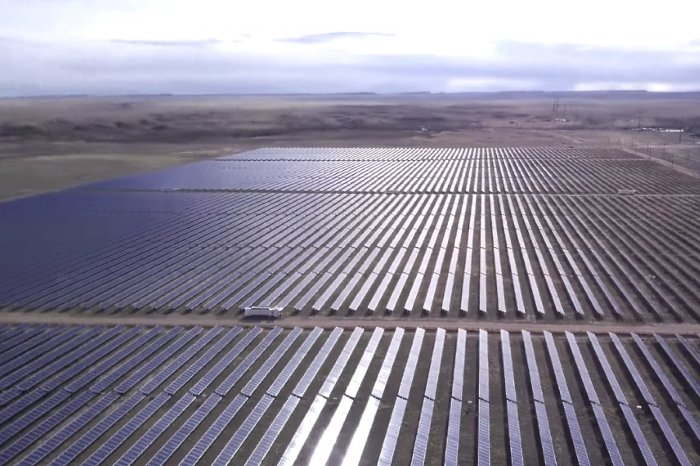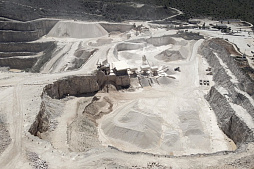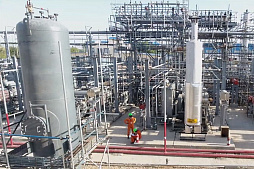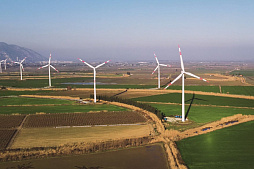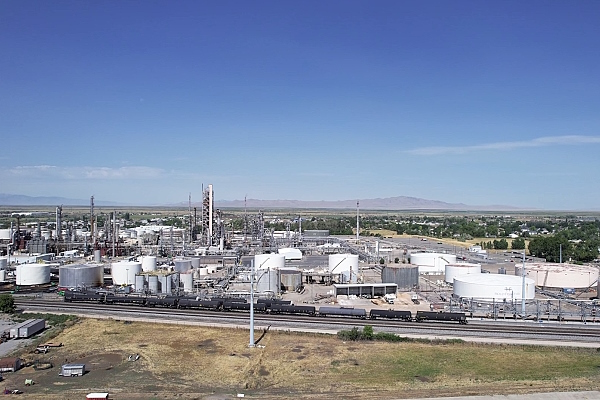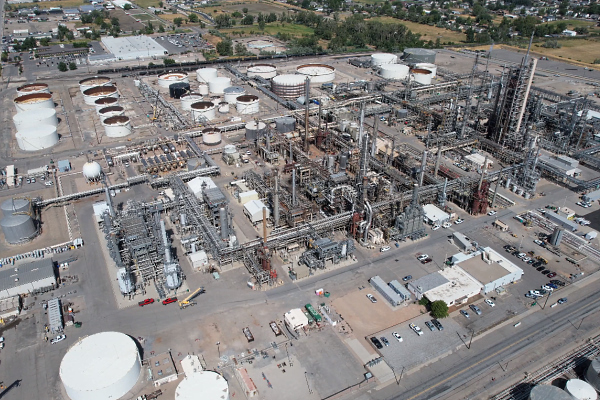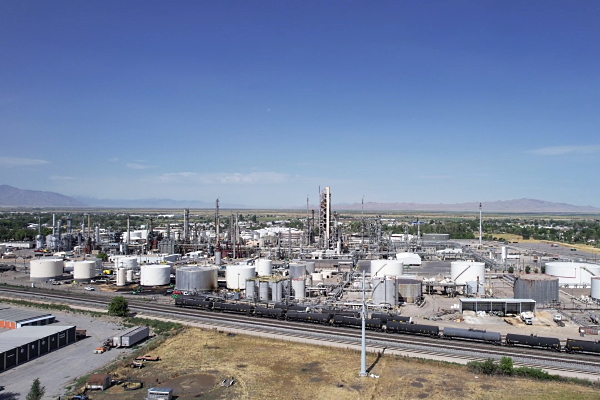After receiving the necessary documents (application form and project presentation), our team will try to review your request as soon as possible, and leading experts will offer the best options for project funding.
Financing such a capital-intensive industry requires a significant inflow of long-term capital, and large private investors and private investment funds have emerged as its most accessible sources.
Our article aims to analyze the role of private investors / investment funds in funding the oil and gas sector, providing business owners and entrepreneurs with valuable insights.
If you are interested in a large loan from a private investor to finance an oil production project, oil refining project, construction of a new gas pipeline or LNG terminal, please contact our team for details.
ESFC Investment Group offers flexible long-term loans to clients worldwide and provides professional financial engineering and modeling services.
Contact us at any time.
About private investments in the oil & gas industry
The oil and gas industry, being one of the cornerstones of the global economy, demands substantial capital for exploration, production, and infrastructure development.While traditional sources of financing such as banks and public markets continue to play a critical role, large private investors and investment funds have increasingly become significant players in funding this industry. Their participation brings flexibility, specialized knowledge, and long-term investment horizons, contributing to the growth and sustainability of the sector.
Oil and gas exploration and production capital spending increased by 39% in 2022 to almost $500 billion, the highest level since 2015 and the largest annual increase in history. The number of oil rigs in the world has grown by more than 20% compared to the previous year. At the same time, experts believe that by 2030 this figure should be increased to 640-650 billion dollars in order to ensure sufficient supplies of hydrocarbons for the global economy.
In recent years private investment funds, including specialized energy funds, have emerged as important participants in financing large-scale oil and gas projects.
These funds pool capital from institutional and individual investors and deploy it strategically in the sector.
Over the past decade, private investment in the oil and gas industry has witnessed substantial growth. According to several industry reports, private capital deployed in the sector increased dramatically from about $75 billion in 2010 to more than $150 billion in 2020.
Factors determining private capital participation in the oil and gas sector
Private investors are attracted to the oil and gas industry due to several factors, including high returns, investment portfolio diversification, and the opportunity to participate in a critically important global industry.Moreover, the sector's long-term demand outlook, driven by global energy consumption, still makes it an attractive investment choice.
Table: Reasons driving private investment in the oil and gas sector
| Key reasons | Brief description |
| Profit potential | The sector offers significant profit potential due to the high demand for energy resources. Private investors are attracted to the potential returns, as the revenue streams can be substantial, especially during periods of increased global energy consumption. |
| Stable and mature market | The oil and gas industry has a long-established presence and is considered a stable market. Investors appreciate the predictability of market dynamics, as energy needs persist and are expected to grow in the foreseeable future. This stability reduces investment risks and provides an opportunity for steady returns on investment. |
| Risk mitigation | Investing in the oil and gas sector allows private investors to diversify their portfolio and mitigate risks associated with economic fluctuations. By spreading their investments across different sectors, investors can balance potential losses with gains from other industries, enhancing overall portfolio stability. |
| Portfolio hedging | Private funds and investors see the oil and gas sector as a hedge against inflation and geopolitical risks. Energy resources are considered a tangible asset with intrinsic value, making them an attractive investment option during uncertain times. |
| Global energy demand | Private investments in oil and gas are also driven by the ever-increasing global demand for energy (including hydrocarbons). As developing countries industrialize and emerging markets expand, the demand for oil and gas remains robust. Investors recognize the huge potential to capitalize on this growing demand and participate in the energy transition while supporting global economic development. |
| Tax incentives and government support | For many countries, the extraction of hydrocarbons remains a strategically important sector on which the entire national economy relies. Governments often provide tax incentives and favorable policies to attract private investments in the oil and gas sector. These incentives, such as tax credits, subsidies, and reduced regulatory burdens, encourage private investors to contribute to the industry's growth while stimulating economic activity and job creation. |
| Technical advancements | Large private investors are often attracted to the oil and gas sector due to the continuous advancements in technology. Innovations such as hydraulic fracturing, horizontal drilling, and improved exploration techniques have revolutionized the industry, making it more efficient and cost-effective. Investors see potential in funding technological advancements that can optimize operations and yield higher returns. |
By considering these factors, private investors can make informed decisions that align with their business goals and contribute to the sustainable growth of the sector.
In turn, the increased interest of large investors and investment funds in the development of oil and gas industry contributes to the expansion of the range of financial proposals and the creation of new opportunities.
Investment strategies of private investment funds in oil & gas industry
Private investment funds employ apply a wide spectrum of investment strategies, including exploration and production investments, midstream infrastructure investments, and oilfield services investments.Each of them is tailored to specific segments within the sector. These strategies allow investors to capture value across the entire oil and gas value chain.
1. Exploration and Production (E&P) investments
Large private investment funds often target E&P companies engaged in the exploration, development, and production of oil and gas reserves.The list of the largest E&P companies includes world-famous names such as Saudi Aramco, ExxonMobil, Royal Dutch Shell, ENI, Chevron, BP, TotalEnergies, ConocoPhillips and PetroChina.
These funds invest large capital in exploration projects, drilling operations, and the acquisition of leasehold rights. They seek to capitalize on potential discoveries and the subsequent production of hydrocarbons, aiming for significant returns as the reserves are monetized.
2. Midstream infrastructure investments
Private investment funds may focus on the so-called midstream infrastructure, which includes pipelines, storage terminals, processing and transportation assets.This type of infrastructure includes such large facilities as the giant energy complex Ras Laffan Industrial City in Qatar, the Gasoducto del Nordeste Argentino gas pipeline (Argentina), Trans-Alaska Pipeline System (USA), the Gassled gas transmission system (Norway), the Habshan-Fujairah Oil Pipeline (UAE), Gate LNG Terminal (Netherlands), Queensland Curtis LNG Plant in Australia and many others.
These funds prefer to invest in the development, expansion, and acquisition of midstream infrastructure to support the efficient transportation and processing of oil and gas. They generate income through long-term contracts with E&P companies, ensuring a steady flow of revenue.
3. Oilfield services investments
Private investors and investment funds targeting the oilfield services sector invest in companies providing specialized services and equipment to the oil and gas industry.This includes drilling contractors, well completion services, rig operators, seismic data providers, and other support services. These funds seek to capitalize on the demand for essential services in the oilfield value chain and benefit from the growth in drilling and production activities.
4. Downstream investments
Private capital may also target the so-called downstream activities, which involve oil refining, marketing, and distribution of petroleum products.They invest in the construction, expansion and modernization of refining assets, storage facilities, retail facilities, and oil distribution networks across the world. This type of investors leverage the stable demand for refined products and focus on optimizing operational efficiency and capturing value throughout the downstream supply chain.

5. Energy transition investments
Perhaps the most complex and controversial type of private investment in the oil and gas sector is financing the energy transition.With the increasing focus on sustainability and renewable energy sources, some investors allocate capital to the green energy within the hydrocarbon industry. They invest in companies involved in renewable energy, clean technologies, CO2 capture and storage, and other initiatives aimed at reducing the environmental impact of the sector. These funds seek to align their investments with the evolving energy landscape and capitalize on the growing demand for clean energy solutions. There are more and more such projects.
Energy transition investments can be clearly illustrated in the United States, where ExxonMobil's $3 billion investment includes both oil and gas sector projects (biofuels, hydrogen) and carbon capture and storage (CCS) initiatives.
Recent Ørsted's investments (Denmark) in offshore wind farms demonstrate their transition from an oil and gas company to a renewable energy leader. Such investments also include joint RWE and Siemens Energy's investments in green hydrogen and Power-to-X technologies that contribute to Germany's energy transition goals.
6. Mergers and acquisitions
Private investors actively engage in mergers and acquisitions (M&A) within the oil and gas industry.They identify potential targets, negotiate deals, and acquire companies to consolidate assets, expand operations, or diversify their portfolio. M&A activities enable funds to capture synergies, gain market share, and enhance their overall investment performance.
As practice shows, such transactions require enormous resources. For example, in 2016, Royal Dutch Shell completed its acquisition of BG Group, an international oil and gas company. The deal was valued at around $53 billion and expanded Shell's LNG and deepwater oil assets. Transactions of comparable value in different years were closed by Total, ExxonMobil, Chevron, Anadarko Petroleum and other giants of the oil and gas sector.
7. Financing the special needs of the sector
Private investment funds specializing in special situations may invest in financially troubled or undervalued oil and gas assets. They provide capital to struggling companies, debt restructuring efforts, or distressed asset acquisitions. These funds take advantage of market inefficiencies and seek to turn around distressed assets for potential future profitability.It's important to note that the investment strategies employed by large investors and private investment funds can vary based on their specific investment mandate, risk appetite, and market conditions.
Some of them may adopt a combination of these strategies or focus on a particular subsector within the oil and gas industry to achieve their primary goals.
Pros and cons of private investors participation for oil and gas projects
Private investors can play a significant role in funding and developing oil and gas projects. However, there are both pros and cons associated with their participation.
Table: Key advantages and disadvantages for projects and their owners
| Advantages | Disadvantages |
| Increased capital. Private investors can inject substantial capital into oil and gas projects, which helps in financing expensive exploration, production, and infrastructure development. Their resources enable the project to progress at a faster pace and reach its 100% potential. | Market volatility and cyclicity. The oil and gas industry is subject to high market volatility and cyclical price fluctuations. Investors might be more sensitive to these factors and may pull out or reduce their investment during downturns, leaving the project financially vulnerable. |
| Access to expertise. Private investors and investment funds often bring industry expertise, knowledge, and experience in managing similar projects. They can provide valuable insights to improve operational efficiency, optimize production, and reduce costs. | Conflict of interests. Investors may have conflicting interests with other stakeholders, such as local governments. Balancing profit objectives with social and environmental concerns can lead to disagreements or tensions during project development and operation. |
| Risk sharing. Rational sharing the financial risk with private investors can reduce the burden on the project's sponsors or government entities. If the project faces unforeseen challenges and / or market fluctuations, investors can mitigate their impact on other stakeholders. | Lack of transparency. Private investors often operate with a certain degree of confidentiality, which can limit the transparency of the project. This may result in limited public oversight and scrutiny, potentially raising concerns about ethical practices or adherence to regulations. |
| Enhanced efficiency. Private investment funds and individuals typically have a profit motive and strive for efficient management. Their focus on maximizing ROI eventually leads to cost optimization and innovative solutions, thereby enhancing overall project efficiency. | |
| Market access and business contacts. Private investors usually have extensive networks and established relationships within the oil & gas industry. Their market access and connections can facilitate the project's entry into new markets, help secure off-take agreements, and attract potential buyers or partners. | |
| Long-term relationships. Investors are often interested in establishing long-term relationships with their partners. This commitment can extend beyond the initial loan, leading to additional funding opportunities for future projects. |
In general, it is crucial to strike a balance between private investment and public interest to ensure that oil & gas projects are developed sustainably, with consideration for environmental, social, and economic factors.
Large and responsible investors often bring more than just financial resources to the table. They can become strategic partners, leveraging their industry expertise, market knowledge, and business contacts to add value beyond capital investment.
Loans issued by private investors and investment funds have become a valuable tool in financing the oil and gas industry. Their growing presence brings numerous benefits, including flexibility of loans and long-term financial horizons.
By leveraging these advantages, companies in the sector can access the necessary capital and expertise to drive growth and overcome industry challenges.
ESFC Investment Group can become your long-term reliable partner for new projects around the world.
Contact us to find out more.






